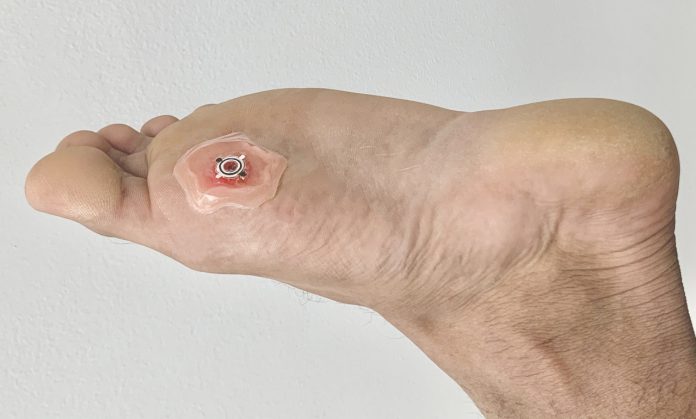
Researchers have created an affordable bandage that uses electricity to help heal chronic wounds faster.
In animal tests, wounds treated with these special bandages healed 30% quicker than those treated with regular bandages.
Their study, titled “Water-powered, electronics-free dressings that electrically stimulate wounds for rapid wound closure,” was published in Science Advances.
Chronic wounds are those that take a long time to heal or don’t heal at all. Examples include sores that some diabetic patients get.
These wounds are troublesome because they often come back after treatment and can lead to severe complications like amputations or even death.
One of the main problems with chronic wounds is that current treatments are very expensive, adding more stress to patients.
“Our aim was to develop a cheaper technology that speeds up healing in chronic wounds,” said Amay Bandodkar, one of the lead authors and an assistant professor at North Carolina State University.
“We also wanted the technology to be simple enough for people to use at home, not just in hospitals,” he added.
“This project is part of a larger effort by DARPA to improve wound healing with custom dressings,” said Sam Sia, another lead author and professor at Columbia University.
“This collaborative project shows that these lightweight bandages, which can be activated by just adding water, healed wounds faster than regular treatments and worked as well as more expensive options.”
The research team developed water-powered, electronics-free dressings (WPEDs). These are disposable bandages with electrodes on one side and a small, biocompatible battery on the other.
To use the bandage, it’s placed on the wound so the electrodes touch the wound. A drop of water is added to the battery, which activates it. The bandage then produces an electric field for several hours.
“This electric field is crucial because it’s known that electric fields help heal chronic wounds,” said Rajaram Kaveti, a co-first author and a post-doctoral researcher at NC State.
The electrodes are designed to bend and fit the bandage, adapting to the often deep and irregular shapes of chronic wounds.
“This flexibility is essential because we want the electric field to move from the edge of the wound towards its center,” Kaveti explained.
“We tested the bandages on diabetic mice, a common model for human wound healing,” said Maggie Jakus, another co-first author and a graduate student at Columbia.
“We found that the electric stimulation from the device sped up wound closure, helped form new blood vessels, and reduced inflammation—all signs of improved healing.”
Specifically, mice treated with WPEDs healed about 30% faster than those with conventional bandages.
“But just as important is that these bandages are low-cost, costing only a few dollars each,” said Bandodkar.
“Diabetic foot ulcers are a major issue that can lead to amputations,” said Aristidis Veves, a co-author and professor of surgery at Beth Israel Deaconess Medical Center.
“There is an urgent need for new treatments, as the last FDA-approved treatment was developed over 25 years ago. My team is excited to be part of this project that explores new, effective methods for treating diabetic foot ulcers.”
Moreover, the WPEDs are easy to apply. Once on, patients can move around and continue their daily activities. This ease of use means patients can treat themselves at home and are more likely to stick with the treatment.
“Next, we will work on improving the stability of the electric field and extending its duration. We are also planning more tests to move closer to clinical trials and, eventually, practical use to help people,” said Bandodkar.
If you care about pain, please read studies about vitamin K deficiency linked to hip fractures in old people, and these vitamins could help reduce bone fracture risk.
For more information about wellness, please see recent studies that Krill oil could improve muscle health in older people, and eating yogurt linked to lower frailty in older people.



